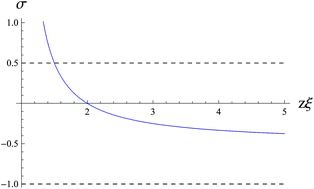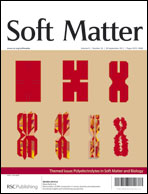Poisson's ratio for a polyelectrolyte
Abstract
Poisson's ratio σ in linear elasticity theory is the ratio of the transverse compression of a rod to its longitudinal extension. For common macroscopic materials, σ is a positive quantity, implying that the rod becomes thinner when stretched. If the rod is a polyelectrolyte that bears a charge density above the threshold for counterion condensation, then the condensed layer of counterions should be regarded as an integral part of the rod. We show on a simple model that Poisson's ratio is then negative for high charge densities. For the charge density characteristic of DNA, the negative value found for σ is in approximate agreement with the negative value inferred from measurements of the bending and twisting moduli of DNA.

- This article is part of the themed collection: Polyelectrolytes in Soft Matter and Biology

 Please wait while we load your content...
Please wait while we load your content...